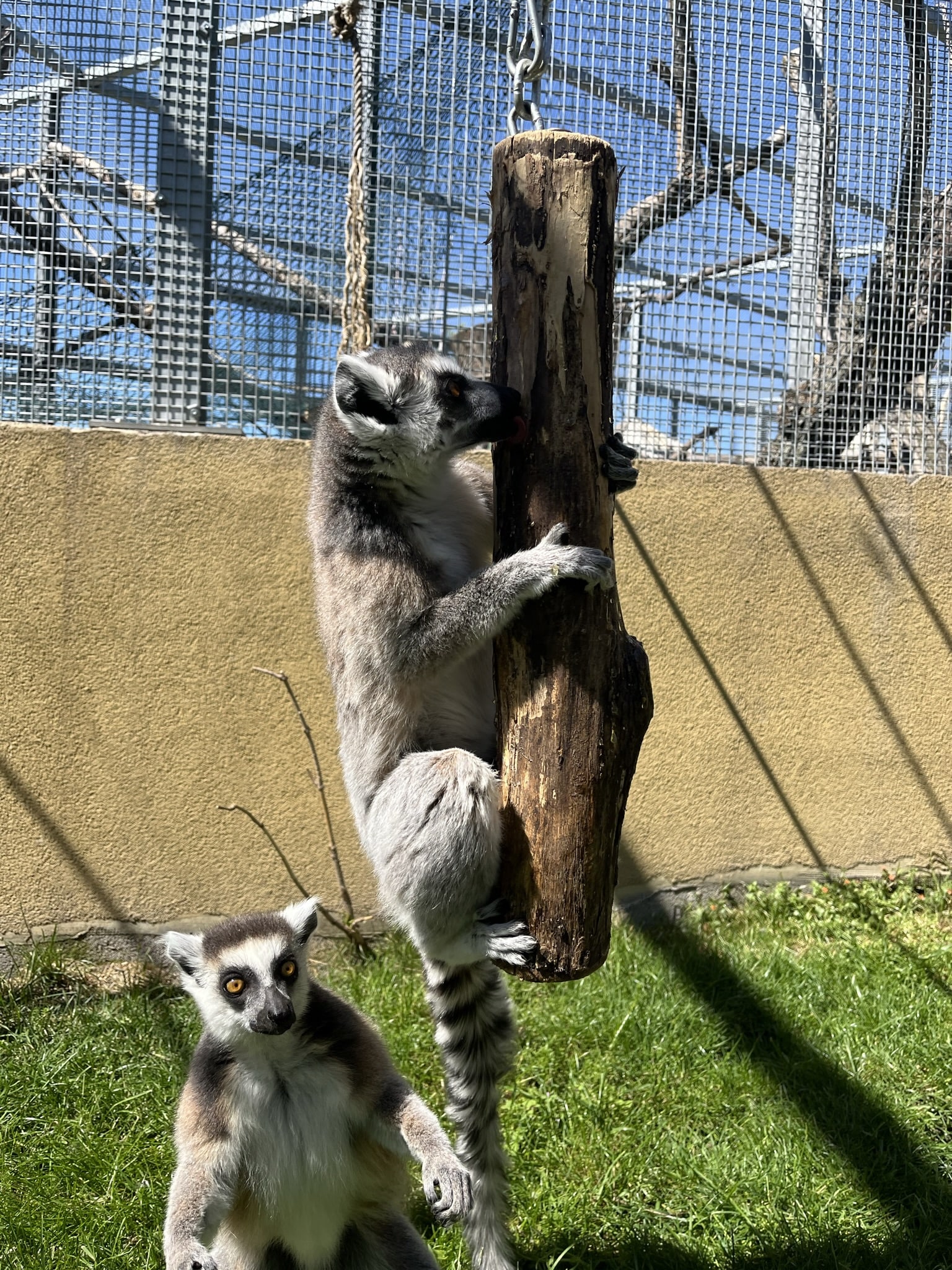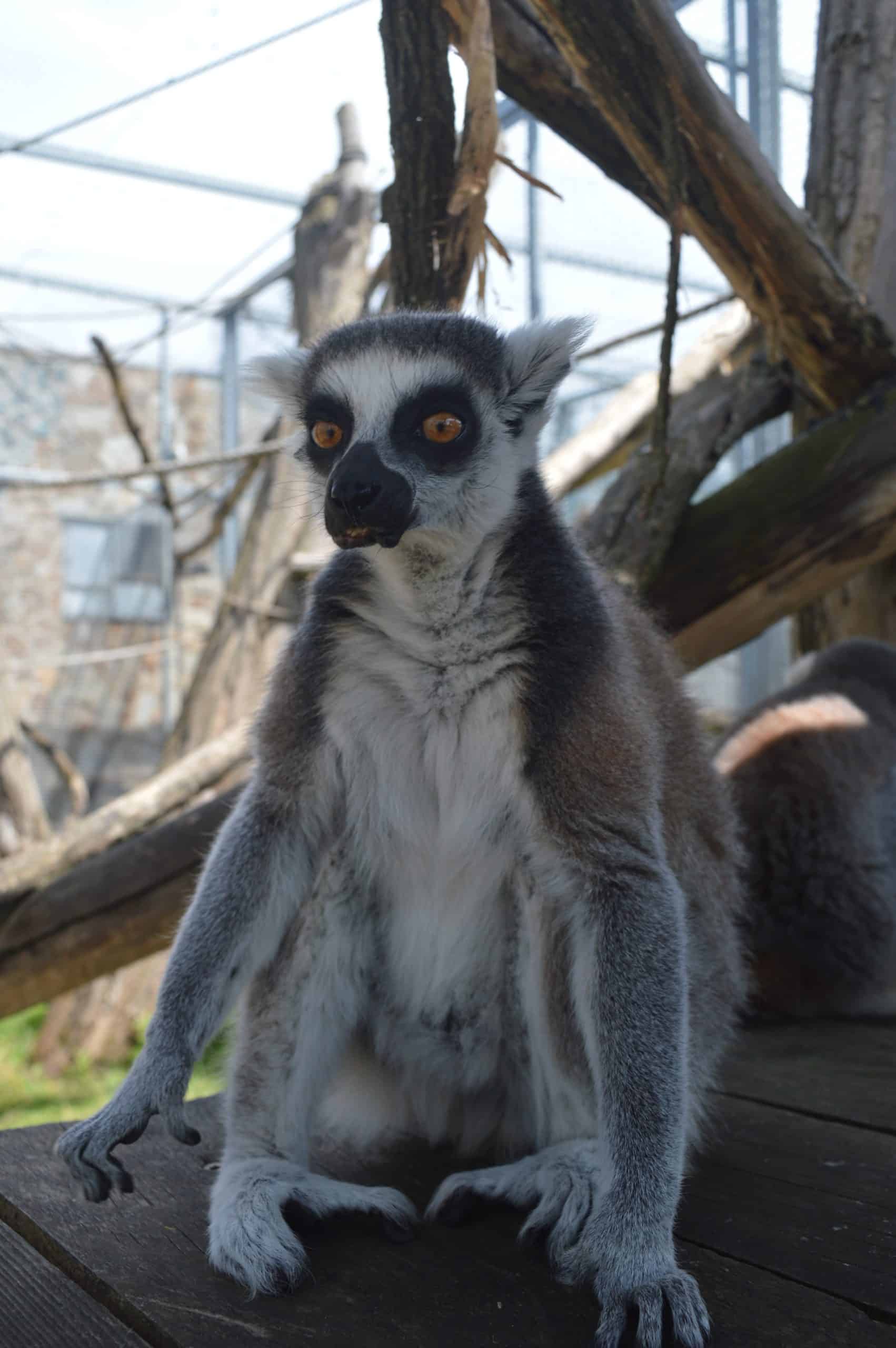The eyes of lemurs are large, forward facing and have bright yellow glowing irises. On the muzzle is a pointed snout resembling a fox. His end is constantly wet and bare. The forelimbs have bare palms, the thumb is placed against the other fingers, which enables a better grasp of objects. On the second toe of each hind foot is a claw adapted for grooming. The soles are bare, providing good grip when climbing trees and rocks. The kata lemur is characterized by its long striped black-gray tail. A long tail has several functions. When a group of ring-tailed lemurs travels through tall grass, they can see each other’s tails and the whole group keeps track of each other. When a male kata lemur is interested in a female, he perfumes his tail with his scent and wags his tail in front of the female in an attempt to attract her.
The scent glands are present in both sexes – above the wrist joint and secrete a smelly, brown, sticky substance.
Lemurs live in groups that can have up to 30 members. The groups are intolerant of each other and fiercely defend their territory. The leader of the group is the female. They are diurnal animals.
Males have “scent fights” for females in heat, while they try to discourage the saps by flicking their scented tails. A battle ensues, the winner of which has the right to mate with the female.
Right from birth, the cub clings to the fur of the mother, who also wraps it with her tail. However, it is not at all easy to hold on, because the mother jumps from branch to branch with him. A cub that is unable to hold on to its fur is easy prey for a predator in the wild. The two-week-old cub moves from the abdominal area to the mother’s back, while at the age of three weeks it already begins to take its first independent steps. The mother breastfeeds the cub for approximately 5 months, while the females also take turns caring for the cubs. The cub is independent at the age of 6 months.
Females that reach adulthood leave the natal group and go off to start their own. Males usually move from one group to another, and although they become sexually mature at 15 months of age, they usually do not successfully mate until they are three years old.
Lemurs like to sunbathe in the so-called yoga position – they sit facing the sun with their front paws spread. If they are cold at night, they snuggle up to each other.
The front teeth are used by executioner lemurs to clean and comb their fur. They are very clean – when they eat juicy fruit, they tilt their head back so that the juice does not run down their fur.
The term “lemur” comes from the Latin language and could be translated as “spirit of the night” or “night spirit”.
The ringed lemur is endemic to Madagascar. Endemic = an animal or plant that occurs in a certain area in its natural environment and cannot be found anywhere else in its natural environment.
Up to 90% of all species of plants and animals found in Madagascar are endemic.
There are up to 99 species of lemurs, hundreds of species of orchids, six of the eight known species of baobabs, 170 species of palm trees and ⅔ of the world’s chameleon population.
There have been recorded cases when orphaned cubs were “adopted” by foreign groups.










